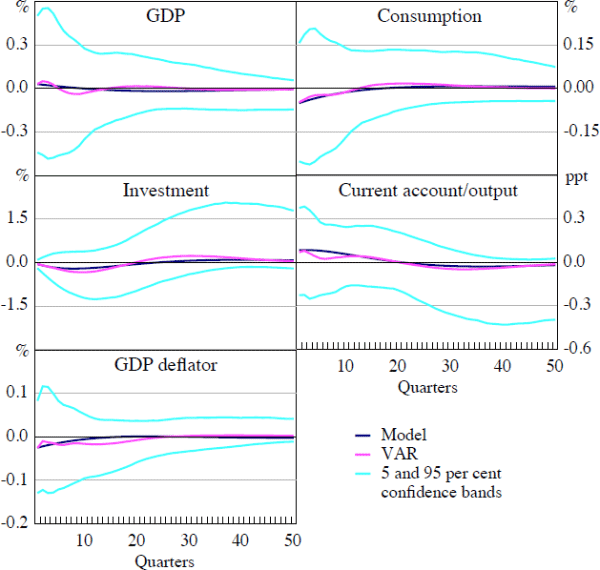RDP 2013-10: Stochastic Terms of Trade Volatility in Small Open Economies Appendix E: What Does the Empirical VAR Capture?
August 2013 – ISSN 1320-7229 (Print), ISSN 1448-5109 (Online)
- Download the Paper 1.06MB
In this appendix, we demonstrate the ability of our empirical VAR exercise to capture the macroeconomic impacts of exogenous shocks to terms of trade volatility. To do this, we compare impulse responses from our empirical VAR estimated using simulated data to the impulse responses to exogenous terms of trade volatility shocks generated by our model. Specifically, we simulate our model for 200 periods, setting all parameters at their baseline values for Brazil. We then estimate our empirical VAR using this data and calculate impulse responses to an innovation to the terms of trade volatility variable as in Section 4. We repeat this process 50,000 times to characterise the distribution of VAR responses.
Figure E1 shows the median, 5 and 95 per cent responses of the simulated VAR for each variable as well as the theoretical responses to a terms of trade volatility shock from the model. Despite its linear structure, the VAR comes extremely close to matching the theoretical model responses. This gives us some confidence that our empirical model reflects a response to an exogenous terms of trade volatility shock.
